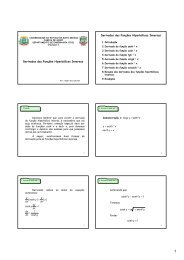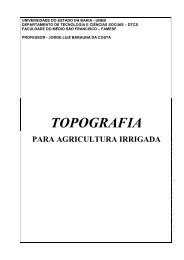Anuário Brasileiro do Arroz 2011 - Unemat
Anuário Brasileiro do Arroz 2011 - Unemat
Anuário Brasileiro do Arroz 2011 - Unemat
You also want an ePaper? Increase the reach of your titles
YUMPU automatically turns print PDFs into web optimized ePapers that Google loves.
the advantages to be derived from this<br />
unprecedented conquest. “I began to<br />
learn as much as I could about regions<br />
with the denomination of origin and I<br />
realized that not only the products from<br />
these areas are highly valued, but also<br />
the farms of the participating members”,<br />
he stresses.<br />
To acquire the right to use the DO<br />
label, the rice growers need to comply<br />
with several requisites, like the use<br />
of certified seed and registered herbicides,<br />
besides fulfilling all the environmental<br />
licensing provisions. Cunha,<br />
who was already complying with all<br />
the requirements, believes<br />
he will not<br />
have any difficulties<br />
in conducting the<br />
farm in line with<br />
the standards set forth by the regulating<br />
organ, which defines and inspects<br />
the production process.<br />
In the view of the Aproarroz president,<br />
what starts now is institutional<br />
work, in an attempt to get the involvement<br />
of the mayors in the municipalities<br />
that belong to the demarcated<br />
area. He recalls that the DO involves<br />
much more than just the production<br />
of rice, but also the tourism segments<br />
and environmental concerns, among<br />
others.<br />
One of the association’s challenges<br />
is to get the North Coast rice industrialized<br />
in the region, which is in fact<br />
one of the requirements regarding<br />
the Denomination of Origin. While Rio<br />
Grande <strong>do</strong> Sul processes 80% of its<br />
entire production, we export to other<br />
TELLING THE DIFFERENCE<br />
Both Denomination of Origin (DO) and Indication of Origin<br />
refer to Geographical Indication (GI). Consider the definition<br />
of both words:<br />
*Geographical Indication: identification of a product or service<br />
that corresponds to a specific geographical location, region or country,<br />
when a particular trait, characteristic and/or quality can be<br />
essentially linked to its origin.<br />
*Indication of Origin: geographical name of a country, town,<br />
region or location of its territory, which has become known as production,<br />
manufacturing or extraction center of a certain product or<br />
specific service.<br />
*Denomination of Origin: geographical name of a country, town,<br />
region or location of its territory, which designates the product or<br />
service, whose qualities and characteristics are exclusively owed to<br />
the geographical area, including natural and human factors.<br />
Source: Inpi<br />
states 70% of our paddy”, he observes.<br />
According to him, the industries <strong>do</strong> not<br />
operate in the region because the raw<br />
material is more expensive.<br />
SCOPE<br />
The North Coast Denomination of<br />
Origin comprises 13 municipalities: the<br />
entire area of the following: Pinhal,<br />
Capivari <strong>do</strong> Sul, Cidreira, Mostardas,<br />
Palmares <strong>do</strong> Sul, São José <strong>do</strong> Norte,<br />
Tavares and Tramandaí, and partial<br />
areas in Viamão, Santo Antônio da<br />
Patrulha, Osório ans Imbé. The entire<br />
region comprises some 100 thousand<br />
hectares of ricefields, totaling about<br />
one thousand growers, who harvest<br />
10% of the total crop produced in Rio<br />
Grande <strong>do</strong> Sul, totaling about 700 thousand<br />
tons a year.<br />
55


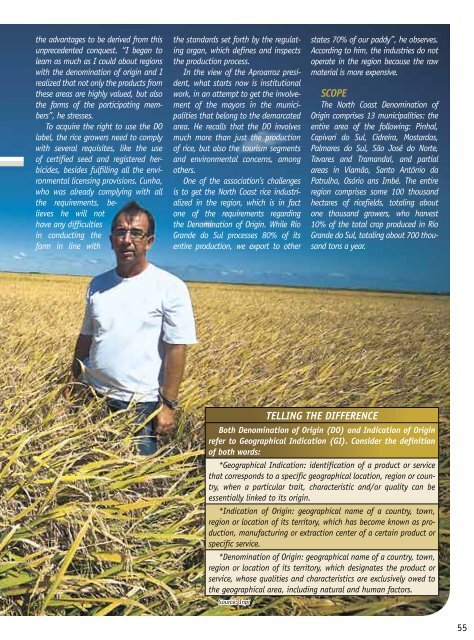
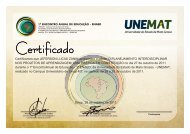
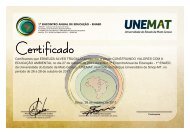
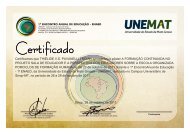
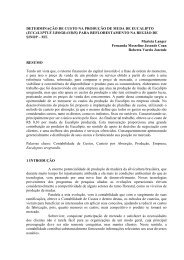
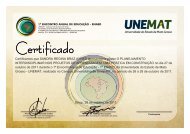
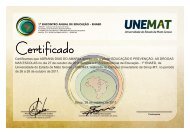
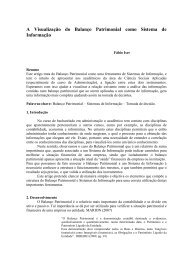
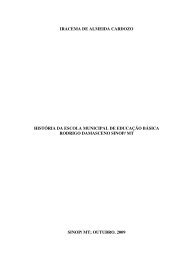

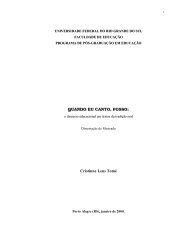
![Aula 31 - Funções Hiperbólicas [Modo de Compatibilidade] - Unemat](https://img.yumpu.com/14334654/1/184x260/aula-31-funcoes-hiperbolicas-modo-de-compatibilidade-unemat.jpg?quality=85)
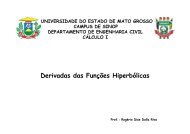
![Aula 31 - Funções Hiperbólicas [Modo de Compatibilidade] - Unemat](https://img.yumpu.com/14332146/1/190x135/aula-31-funcoes-hiperbolicas-modo-de-compatibilidade-unemat.jpg?quality=85)
